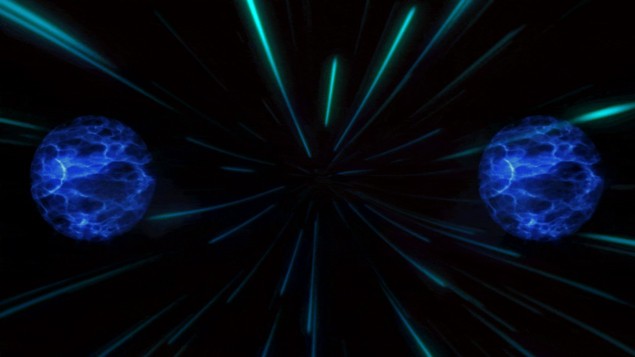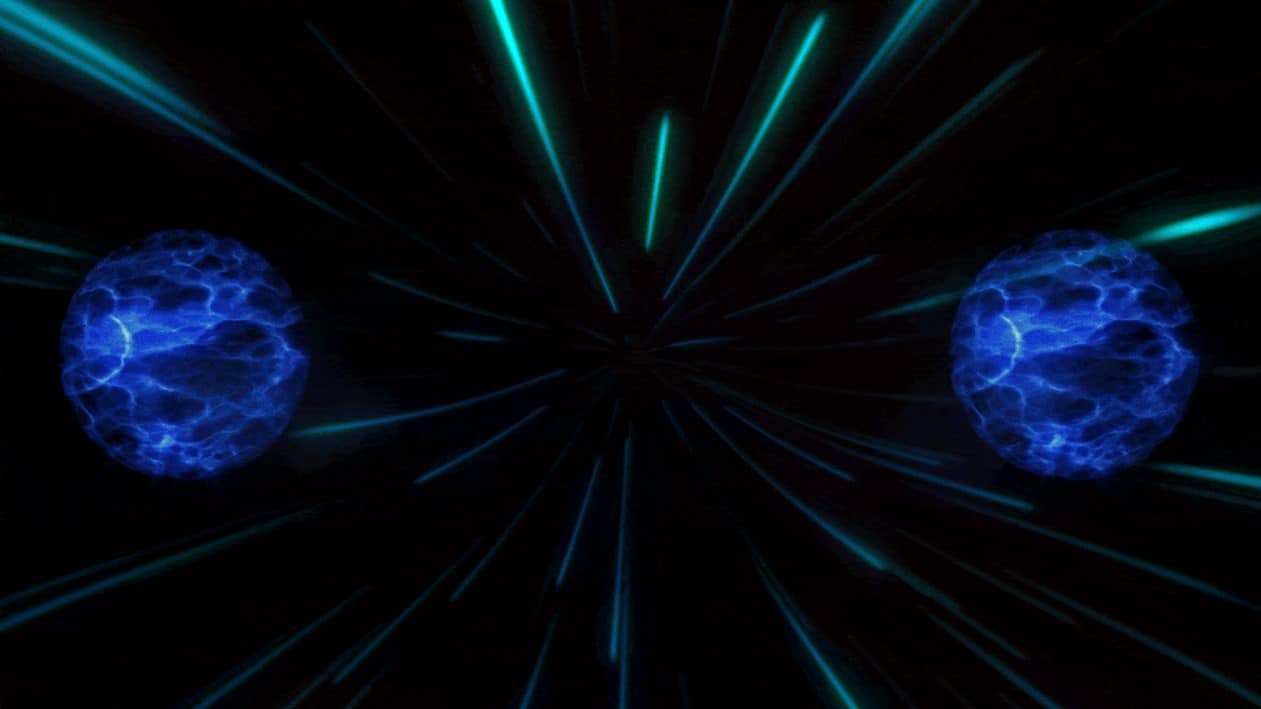
Majorana bosons – hypothetical quasiparticles that are in many ways analogous to Majorana fermions – could exist in quantum systems with dissipation. That is according to calculations done in the US by Vincent Flynn and Lorenza Viola at Dartmouth College and Emilio Cobanera at the SUNY Polytechnic Institute. The existence of Majorana bosons suggests that in such systems a photon could be separated into two “halves”.
The Majorana fermion was first proposed as a subatomic particle by the Italian physicist Ettore Majorana in 1937. He noticed that spin-1/2 particles could be described by wave equations that were entirely real-valued. As the wavefunction of a particle is the complex conjugate of the wavefunction of its antiparticle, a particle whose wavefunction was entirely real would be its own antiparticle. It could therefore carry no charge.
Contentious existence
With the possible exception of neutrinos, whose Majorana nature remains undetermined, a real Majorana fermion has never been discovered. However, Majorana fermion quasiparticles – akin to “split” electrons – can theoretically be stable in systems such as superconductors, as predicted in 2001 by Alexei Kitaev, who is now at Caltech. In 2018, researchers in the Netherlands claimed to have observed evidence of Majorana fermions in a single indium antimonide nanowire partially covered with superconducting aluminium. However, the paper describing this observation was later retracted as the experimental data were found inconclusive.
Nevertheless, Viola explains, “from a theoretical perspective, that system is stable; it’s in equilibrium in its ground state.” Indeed, researchers have proposed that the unique topological properties of such Majorana fermions could be used in “Majorana qubits” that store information in two separate electrons, making them robust against local disorder.
The situation is different for bosons such as photons. Topological photonics has become an active area of research, and topological insulators, which are electrically insulating in the bulk but conduct electrons along scattering-free “topologically protected” paths, are expected to be useful in applications ranging from optical isolators to lasers.
Troublesome instabilities
To produce a Majorana-boson quasiparticle in a similar setting, however, was thought impossible: “There’s a really important distinction between a topological insulator and a topological superconductor,” explains Flynn. “They’re both topological, they’re both non-interacting, but the type of edge modes you get are very different. In a topological superconductor, things like Majorana fermions are possible – these are not the type of edge excitations you would see in a topological insulator…It follows from a well-known theorem that when you try to replicate the ground-state topology of a topological superconductor with photonics, you run into unavoidable instabilities.”
In the new work, however, the researchers show that this instability can be circumvented, provided the system is made dissipative. In 2013, researchers in Austria and Switzerland calculated that, rather than simply acting as a perturbation, energy dissipation can induce novel topological steady states in fermionic systems.
Inspired by this, Viola and colleagues calculated that, though the zero-energy, non-propagating Majorana bosons would never truly be stable, if suitable energy dissipation is included, the mode could become metastable. Moreover, the larger the system became, the longer the lifetime these states could have.
Tabletop experiments
“They don’t have the sub-femtosecond lifetimes of the Higgs boson,” says Flynn. “We should actually be able to detect them over practical time scales with tabletop equipment.”
The researchers hope to verify their predictions using photons in dissipative microwave cavities, but, in principle, the idea is more general: “As long as we have a physical system that could obey the dynamical equations we have and the constraints of the model we have, there is no requirement in the theory that the Majorana boson would come from a photon,” says Viola; “It could be potentially come from another boson like an atom that carries integer spin.”

Majorana-based quantum computation gets a handy new platform
Mark Dykman of Michigan State University says that this latest research builds on interesting work by Aashish Clerk of the University of Chicago and others showing that chains of microwave cavities could behave as polarization-selective amplifiers of radiation. “[Viola] adds another term to Clerk’s model – she’s very clear that it doesn’t make much difference,” before introducing new “auxiliary excitations” that are purely defined by their symmetry to a true excitation, performing a calculation with these, and defining the result as a Majorana boson.
He sees a key difference between true Majorana fermions and the particles proposed here, however. “True Majoranas are half of a particle,” he says; “so no matter how far they are from each other they know that they belong ultimately to the same particle. Here, it’s a very different situation because they are bosons, so they are constructed in such a way that the further away they the stronger or weaker is this correlation.”
The research is described in Physical Review Letters.
